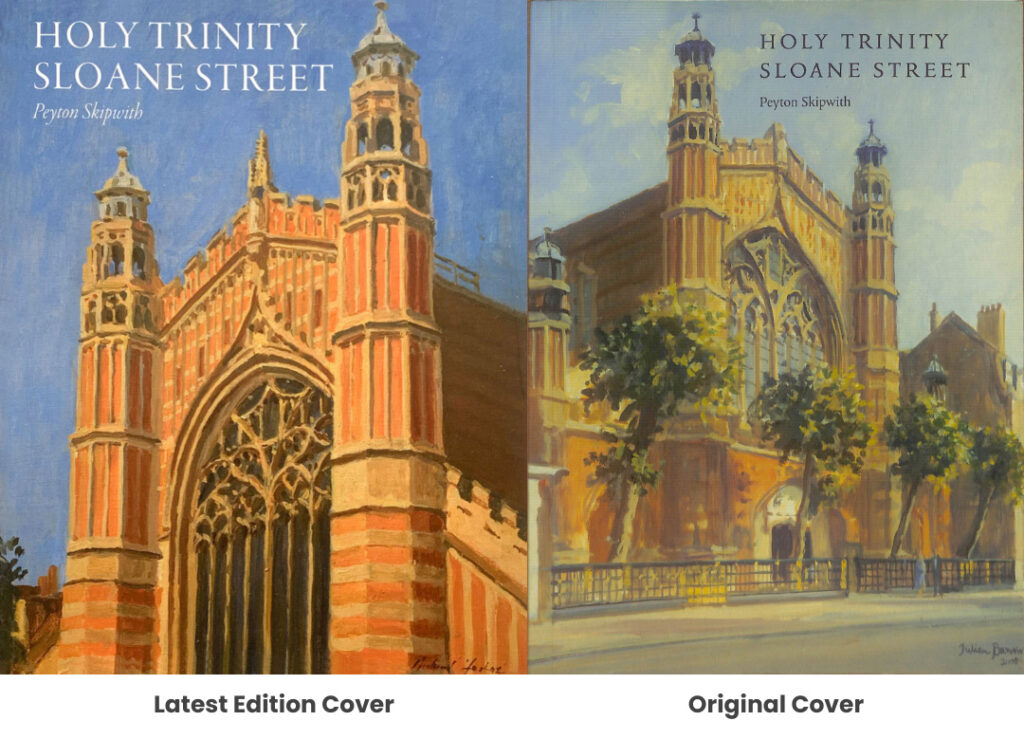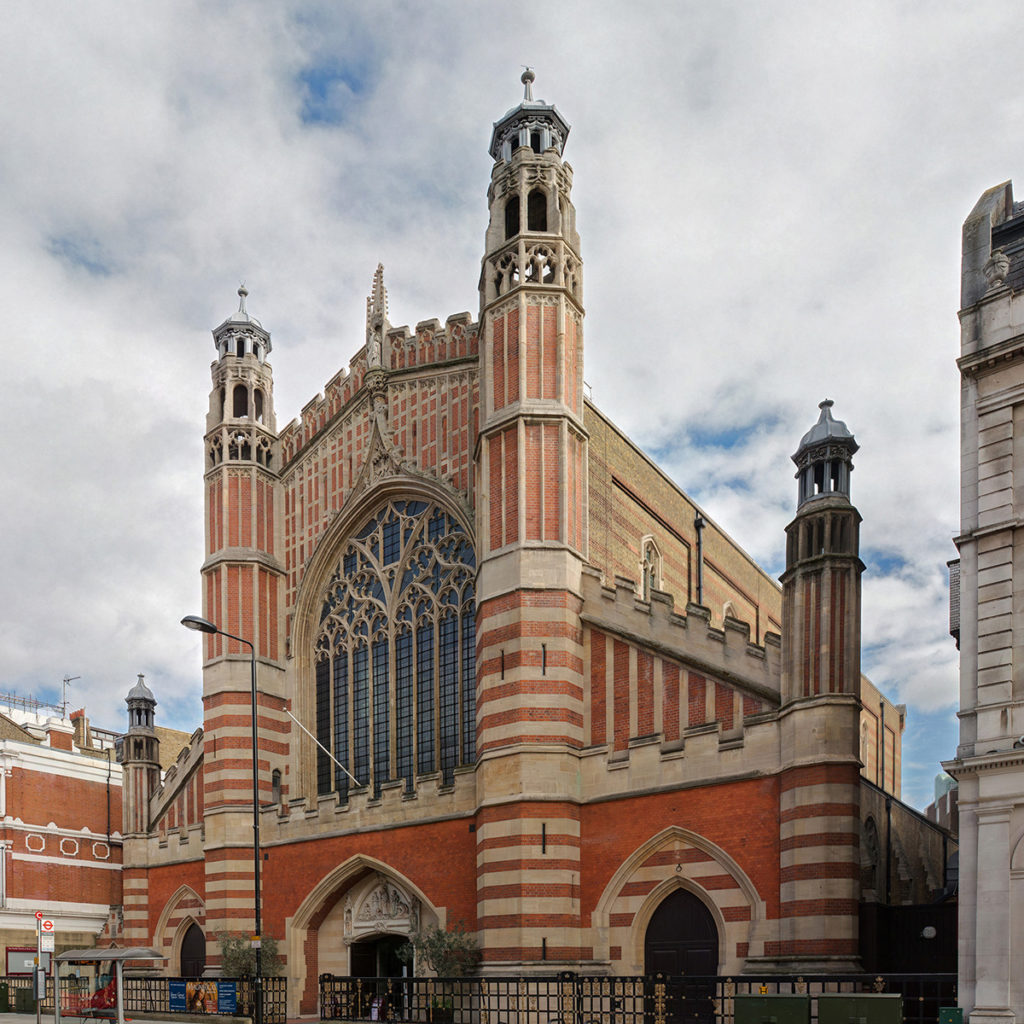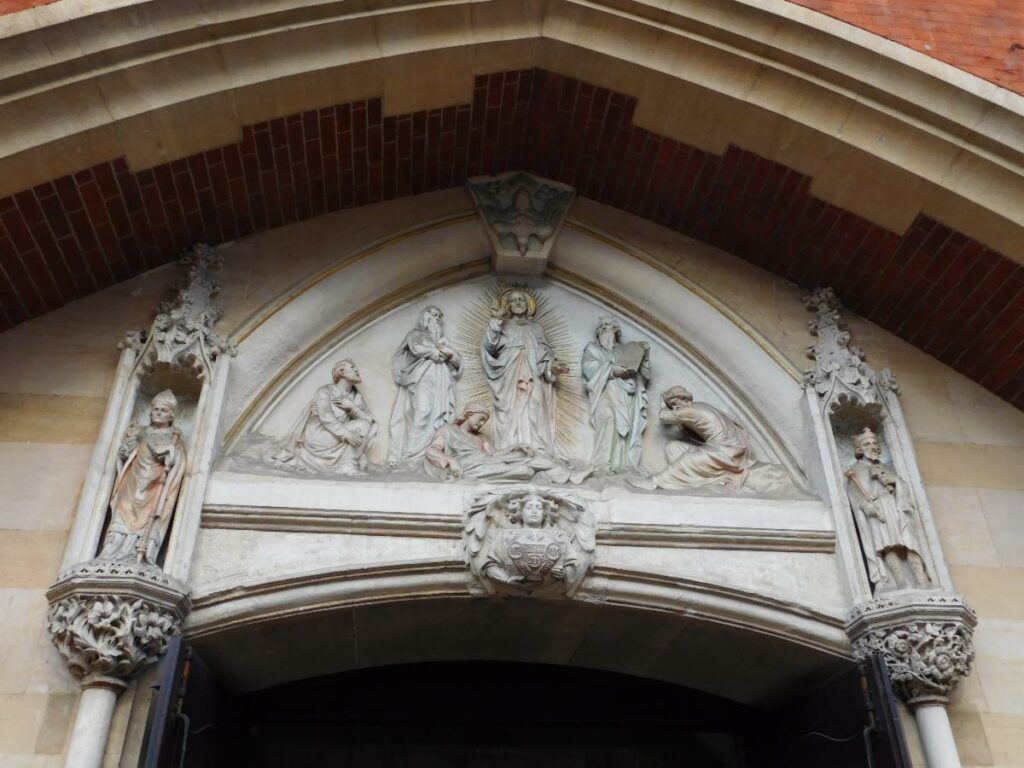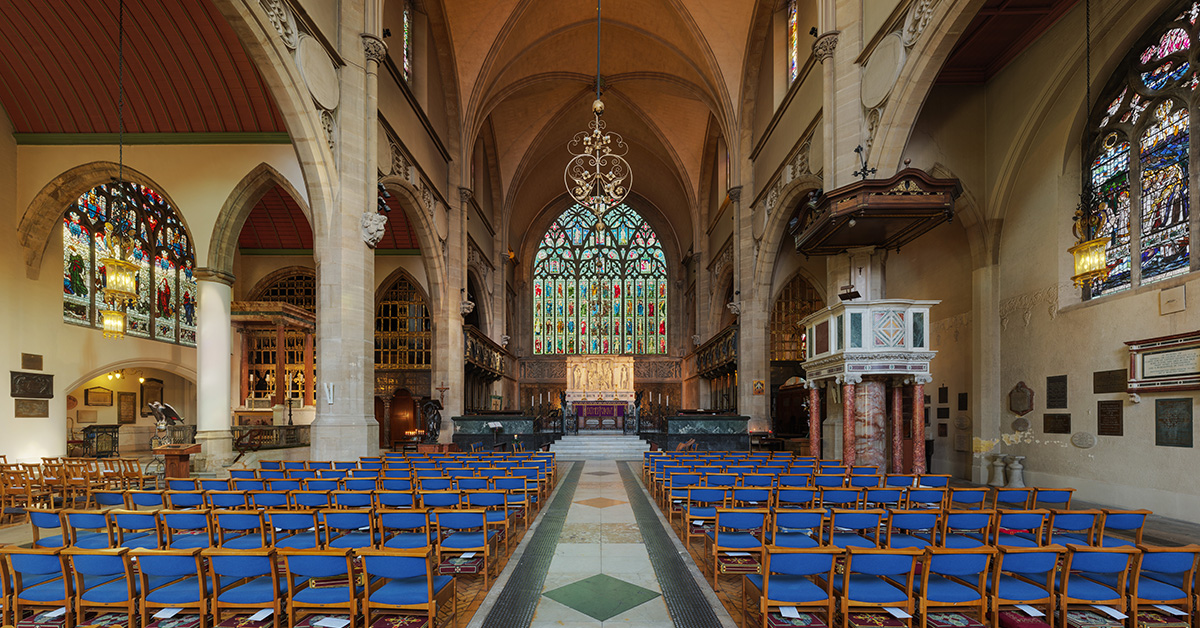A lover of churches, when emerging at Sloane Square tube station in London, has two choices: they can turn left and make their way towards the tucked away Anglo-Catholic jewel that is St Mary’s Bourne Street, or they can turn right and head towards the monumental Arts and Crafts cathedral (as the poet John Betjeman described it) Holy Trinity on Sloane Street. Peyton Skipwith’s stunning new book about Holy Trinity, featuring fresh research and superb colour illustrations, brings the significance and delight of this church to life for new audiences. With a façade that combines bright brick with mellow stone and a huge range of gleaming stained-glass windows, Holy Trinity’s something of a paradise for anyone who loves art and architecture with a soul. Its exterior echoes the iconic architecture of King’s College Chapel in Cambridge and Gloucester Cathedral. Inside, artists including William Blake Richmond, Christopher Whall and William Morris offer some of their very best work in motifs and iconography that explore the Bible, allegory, and sacred themes with imaginative intensity. The gold vine leaves on the outer gates symbolise the Eucharist, just as the carved stone over the main doorway symbolises the mystery of the Trinity, Father, Son and Holy Spirit. Inside, the imposing marble pulpit’s decorative geometry contrasts with the lithe metalwork lighting fixtures. These guide the eye upward to the east window, which has no fewer than 61 panels, each containing a saint, angel, or biblical narrative.

Holy Trinity’s architect, John Dando Sedding, trained with the Gothic Revival architect George Edmund Street. In 1872 he married Rose Tinling, whose father was a canon at Gloucester. As his work and reputation grew, he became a key member of the growing group of Arts and Crafts artists and architects including Philip Webb and F. W. Pomeroy whose work would define a new British style. Sedding’s closest associate was Henry Wilson who, after Sedding died in 1891, carried on his work with deep fidelity. Sedding was a devout Christian, and in his book Art and Handicraft, he wrote, ‘It is the mission of art to gladden human life, to attract men to goodness, to lift man’s ideal, to suggest hallowed emotions, to witness for the faith, to lend wings to the soul, to bring heaven nearer’. At Holy Trinity, this is precisely the vision that Sedding, together with the artists he assembled, endeavoured to create. Particular highlights include the velvet altar frontal with images of Christ’s Passion embroidered by Rose Sedding, Whall’s windows depicting the Descent of the Holy Spirit and the Adoration of the Magi, and Henry Wilson’s bronze screen with two intertwined peacocks.

Though it may be difficult to believe now, as the sun pours in through Morris and Company’s largest ever window and the marble, bronze and wood sculptures beckon, Holy Trinity has had to fight for its survival no less than three times since its foundation stone was laid by Beatrix, Countess Cadogan on Ascension Day (30 May) in 1889. The church was badly damaged by bombing in the Second World War. With the nave roof obliterated by the Blitz, the congregation crowded into the Lady Chapel and waited ten long years for the completion of a replacement roof. Just two decades later Holy Trinity was in peril again, threatened by developers who saw little value in a dusty old late Victorian house of God, caring little for its artful craftsmanship or its purpose. A campaign spearheaded by the Victorian Society – and by Gavin Stamp and John Betjeman in particular – ensured that the building was saved and restored, but peril remained. In the 1990s, there was talk of closing the church and turning it into a concert hall. The Bishop of London refused, and the church remains a vibrant house of prayer today.

Skipwith’s book, which also includes chapters on church history and its present vision by the Rector, Fr Nicholas Wheeler, demonstrates the innovative impact – and the sheer beauty – that Holy Trinity has, encouraging readers to visit one of London’s most important churches and spend quality time being inspired by its sacred treasures.


